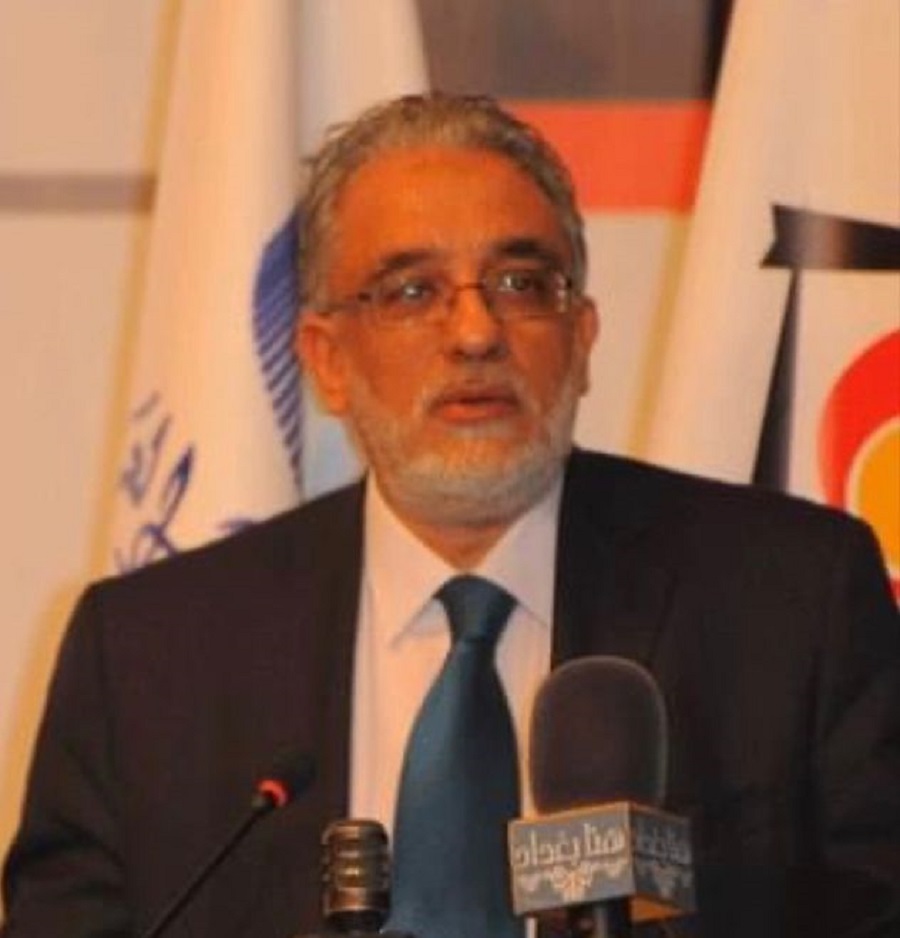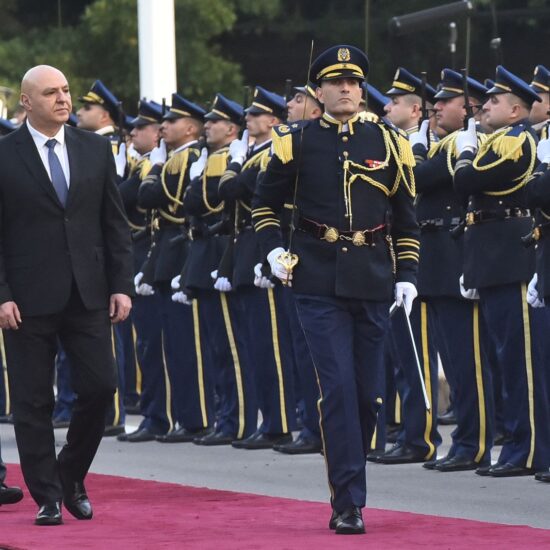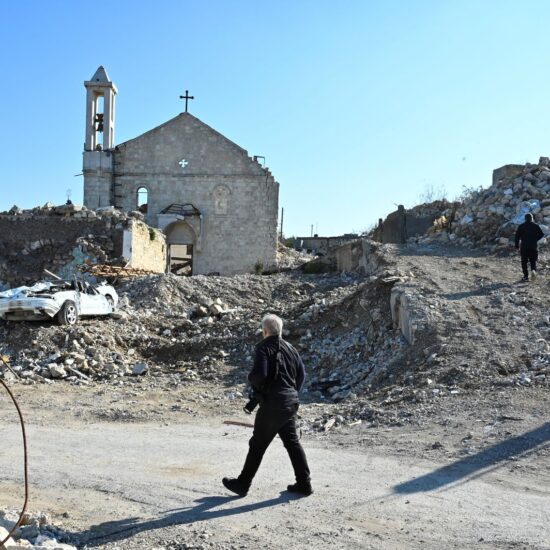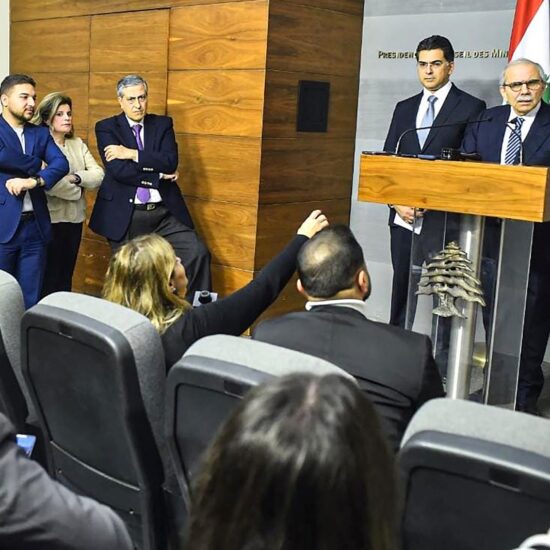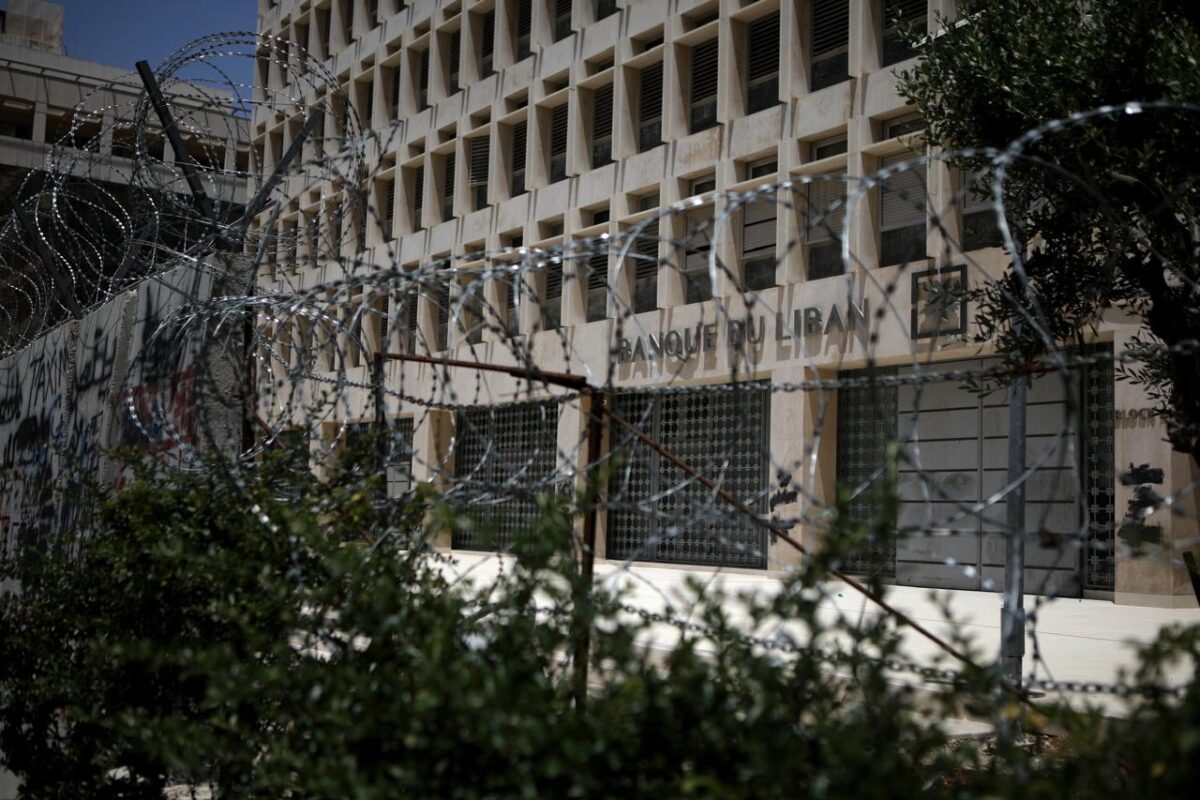
Stability prospects look dim as Lebanon’s Central Bank (BDL) is injecting more dollars for stabilisation, with 1.4 trillion Lebanese liras taken out of circulation, intervention costing BDL 344 million dollars in two weeks, and financial sector deposits downing 434.36 million dollars
The ongoing war in Lebanon is exacerbating the country’s already fragile financial and monetary situation, threatening to derail any prospects for economic reform and making it nearly impossible to meet budgetary objectives. With public finances already crippled by years of mismanagement, corruption, and the 2019 financial crisis, the war is placing additional strain on the state’s ability to function. The costs of military operations, humanitarian aid, and infrastructure damage are skyrocketing, draining the government’s limited resources and pushing Lebanon deeper into monetary chaos. Lebanon’s Central Bank, Banque du Liban (BDL), is struggling to maintain currency stability as the war fuels inflation and further devalues the Lebanese pound, which has already lost over 98% of its value since the start of the financial collapse. The state’s reliance on foreign currency reserves has become unsustainable, and with remittances from the Lebanese diaspora declining due to global economic uncertainty, the monetary crisis is worsening by the day. Inflationary pressures are intensifying, making the cost of living unbearable for most citizens, while the government’s ability to provide basic services is rapidly deteriorating. Amidst these challenges, the government’s efforts to implement structural reforms, as demanded by international lenders such as the International Monetary Fund (IMF), are faltering.
The human toll
The United Nations and other humanitarian organisations estimate that more than 1.5 million people, including both Lebanese citizens and Syrian refugees, are in need of urgent humanitarian assistance. The increasing displacement has put additional strain on already overburdened shelters and host communities, exacerbating the country’s economic and social challenges. This surge in displaced individuals further intensifies the demand for shelter, food, healthcare, and essential services, with limited governmental capacity to address these needs effectively. The humanitarian crisis in Lebanon, driven by both economic collapse and conflict, continues to deepen, with little sign of relief in sight.
Lebanon’s hyperinflationary environment is exacerbated by the lack of political and financial reforms, which makes stabilising the currency and containing inflation a near-impossible task. As inflation accelerates, the population continues to suffer from rising prices, worsening poverty, and growing social unrest, deepening the country’s socio-economic crisis.
The government’s response has been inconsistent in dealing with the displaced toll. While an emergency plan offers a minimal framework, the situation on the ground remains dire. Proposals such as using prefab shelters and repurposing state-owned buildings, including those held by Lebanon’s central bank, have largely remained just that—proposals. Powerful interests, particularly in the banking sector and among politicians, resist considering options beyond schools. Instead, they aim to use central bank properties (rather than their own assets) to compensate depositors who lost their savings in the financial crisis they created. This opportunism reveals a blatant disregard for a population already enduring years of economic hardship, now exacerbated by the worst conflict since the Civil War of 1975-1990.
Instead of delaying, immediate action is needed to expand public shelter capacity and relieve schools by utilising all available resources – prefab shelters, government buildings, cash assistance, and anything else that can be mobilised. While the government’s Disaster Risk Management (DRM) unit has made strides in training people to serve as shelter focal points and manage collective shelters, the invisible population – the vast majority outside the formal system who cannot access these shelters – is overlooked.
Markets under pressure
In a clear sign of worsening economic conditions, Lebanon’s Central Bank reserves dropped by 344 million dollars in the first half of October, a clear indication that BDL is injecting dollars to protect the lira.
At this pace of Lebanon burning reserves in dollars, therefore, the BDL needs three months to deplete the 2.1 billion dollars it has been collecting since July 2023. BDL has been focusing on one thing only: keeping a stable lira and building reserves (expat dollars, boosted by high taxes, no spending). Stats show that about 1.4 trillion lira were taken out of circulation. It seems that the escalation of war is beginning to dry up dollars in Lebanon.
Lebanon’s gold reserves soared by 7.2 billion to 24.5 billion dollars over the past year as the metal trades at a fresh record.
BDL’s acting governor said reserves rose by 1.8 billion to 10.4 billion dollars over the past year.
The Bank doesn’t publish breakdown of reserves and has been saying for over a year that it is “currently changing accounting policy in line with international practices” he claimed.
The increase can be true by looking at the high taxes with no government investment, as well as the entry of dollars into the country while the pound remains stable. Basically BDL is buying dollars from the market. The biggest loophole remains the over 80 billion dollars liabilities.
Lebanon’s Central Bank will now allow withdrawal of cash dollars from USD accounts converted from Lebanese pounds after October 2019 this seems like a sign of dollar injection by using cash dollars that the bank was taking out of the market (about 1 billion was collected over a year).
Lebanon’s finance ministry was expecting to generate a fiscal surplus in 2024 (revenues to exceed expenses) while the central bank reserves grow when the country suffers from a war and economic contraction. More wishful thinking as the war will not allow the government to reach its budget promises.
Markets are focused on increasingly fraught geopolitical developments in the Middle East, with the US election race prompting investors to flock to safety.
Overnight rates bubble
As the Lebanese pound continues to lose nominal value, investors and depositors are reluctant to hold Lebanese pounds, driving demand for US dollars. In response, the central bank and commercial banks have hiked interest rates to try and attract deposits in Lebanese pounds, stabilising the currency somewhat in the short term. The interest rate on Lebanese pounds soared as high as 70 pct this week. This unprecedented spike in rates underscores the country’s financial instability and the lack of trust in its currency. However, such high rates are unsustainable in the long run and create further burdens on the economy. This steep increase in interest rates will also have dire consequences for businesses and households, as borrowing costs become prohibitively expensive. Moreover, it indicates growing difficulties for Lebanon in managing its monetary policy, leaving the state further away from achieving economic recovery or reforms.
As overnight rates soar, there is growing concern about the potential for a bubble formation in financial markets. When interest rates rise rapidly, the cost of borrowing increases, which can have a cooling effect on the economy. However, if certain sectors or asset classes – such as real estate in the case of Lebanon – have already experienced inflated growth due to previous low-interest rates, the sudden shift can create instability. The fear of a bubble formation is arising knowing that even in times of war investors continue to chase high returns in these inflated markets despite rising rates. This behaviour is often driven by speculative buying, where investors anticipate future price increases rather than the underlying value of the assets. Soaring overnight rates could discourage traditional investment avenues by making borrowing more expensive, yet some investors might still pour money into high-risk assets, expecting profits despite the changing financial conditions. This can lead to an unsustainable increase in asset prices, with the value of investments far outstripping their real economic worth. When the bubble eventually bursts – either due to continued rate hikes, economic slowdown, or a shift in market sentiment – prices can crash suddenly, causing severe financial losses and potential economic crises. The fear, therefore, is that soaring overnight rates could be the trigger for such a correction in overheated markets.
Monetary situation
The BDL is restricting local currency supply at banks to try to limit its depreciation. When interest rates rise sharply, the cost of borrowing increases, and businesses and consumers alike find it harder to access affordable credit. In Lebanon’s already fragile economy, this could lead to decreased business activity, reduced investments, and slower economic growth. At the same time, the rise in interest rates signals that inflationary pressures are likely to worsen. Higher interest rates could lead to further depreciation of the Lebanese pound, causing the cost of imported goods to skyrocket and further eroding purchasing power. Moreover, The overnight rate is the interest rate at which banks lend to each other for short-term loans, usually overnight. It serves as a benchmark for other interest rates in the economy, influencing borrowing costs for consumers and businesses.
According to the balance sheet of the BDL for the period ending mid-October, the value of the Central Bank’s liquid reserves dropped from 10.85 billion dollars at the beginning of the month to around Usd10.5 billion by mid-month. BDL has also dropped the amount of dollars it pumps into the market.
Lebanon’s Central Bank will now allow withdrawal of cash dollars from USD accounts converted from Lebanese pounds after October 2019. Seems like a sign of dollar injection by using cash dollars that the bank was taking out of the market (about 1 billion dollars was collected over a year). This means the Central Bank of Lebanon spent approximately 343.65 million dollars over a two-week period due to bearing the cost of additional withdrawals. In percentage terms, the total reserves decreased by about 3.1% during this period.
These recent developments mark a reversal in the increase in reserves that the Central Bank had been experiencing for months, thanks to its ability to purchase dollars from the parallel market. For example, during the second half of September 2024, the Central Bank’s reserves increased by 59 million in a period of less than two weeks. Between mid-February and the end of September, the Central Bank had managed – through gradual bi-monthly increases – to raise its reserves by approximately 1.19 billion. It’s noteworthy that the amount spent by the Central Bank during the first half of the current month is equivalent to about 29% of the total increase in reserves it had achieved since mid-February. In contrast, in terms of the value of gold reserves, the Central Bank recorded an increase in this item, rising from 24.46 billion dollars at the beginning of October to 24.47 billion dollars by mid-month. This represents a modest increase of around 5.8 million during this period, due to the rise in global gold prices. It is known that the Central Bank re-evaluates its gold reserves every 15 days, based on global gold prices, as reflected in the bi-monthly balance sheet it presents. A review of the liabilities in the balance sheet confirms the analysis regarding the reasons for the decrease in reserves.
The value of financial sector deposits – including those of banks – at the Central Bank of Lebanon fell by about 434.36 million during the first half of October. This clearly indicates that banks used their balances held with the Central Bank to withdraw cash in US dollars from the Central Bank’s reserves to finance additional and exceptional withdrawals. In other words, the Central Bank reduced the value of banks’ deposits with it, corresponding to the liquidity it provided to the banks to finance exceptional depositor withdrawals, according to the mechanism agreed upon between the two parties.
On the other hand, it is evident that public sector deposits – or state accounts – at the Central Bank of Lebanon decreased by approximately 60.98 million dollars during the second half of October, bringing the total to around 5.91 billion dollars by mid-month. Once again, the Central Bank found itself forced to abandon its months-long policy of accumulating public revenues at the Central Bank while enforcing a strict austerity policy at the level of the Lebanese state. It is important to note that public sector deposits had previously recorded an increase of 197.68 million during the second half of September and a rise of approximately 1.66 billion since mid-February.
In fact, it is likely that the Central Bank had to allow the Lebanese government to spend part of its accumulated funds due to certain emergency expenditures that became necessary during the war. However, this development does not necessarily indicate that the Ministry of Finance and the Central Bank are abandoning their current austerity policies. Whether they continue or not will become clear from the figures in the coming period. Despite this development, the Central Bank has been able to control the size of the money supply in circulation in Lebanese pounds, which did not increase but rather declined from 53.46 trillion Lebanese pounds to 52.04 trillion pounds between the beginning and middle of October.
Naturally, these figures carry particular importance when examining monetary stability during the war. Reducing the liquidity of Lebanese pounds in circulation would automatically lead to greater stability in the exchange rate of the lira, given the limited availability of local currency that could potentially convert into demand for foreign currency on the parallel market. In conclusion, it is clear that the effects and consequences of the war have reflected on the Central Bank’s balance sheet this time, particularly in terms of the size of reserves and the value of public sector deposits. Nevertheless, it is certain that these developments do not currently pose a cause for concern regarding financial and monetary balances, as the withdrawal decision was exceptional and a one-time occurrence.
Failure to reform for another decade?
The war has diverted attention and resources away from critical reforms in areas like public sector efficiency, banking sector restructuring, and anti-corruption measures. Without these reforms, Lebanon cannot unlock much-needed international financial assistance or restore investor confidence. As the fiscal deficit grows, the government’s budget objectives are slipping further out of reach, and the state’s capacity to achieve financial stability is collapsing, making it almost impossible to chart a path toward recovery and reform under current conditions.
Technically Lebanon is failing once more to achieve head-on the fundamental problem of weak governance. The IMF recommended reforms to enhance transparency must be centred on strengthening the anti-corruption framework and improving the performance of state-owned enterprises, particularly the energy sector. This should include audits of the central bank and the electricity provider.
Also failing of the implementing a fiscal strategy, combining deep debt restructuring and reforms to restore credibility, predictability, and transparency of the fiscal framework, while expanding the social safety net, essential to protect the most vulnerable; as well as pursuing a comprehensive restructuring of the financial sector a key demand for IMF and recognizing upfront the losses at private banks and the Central Bank, is far fetched at the present. Not to mention establishing a credible monetary and exchange rate system, supported by the unification of multiple exchange rates and accompanied temporarily by formal capital controls.
Maan Barazy is an economist and founder and president of the National Council of Entrepreneurship and Innovation. He tweets @maanbarazy.
The views in this story reflect those of the author alone and do not necessarily reflect the beliefs of NOW.


